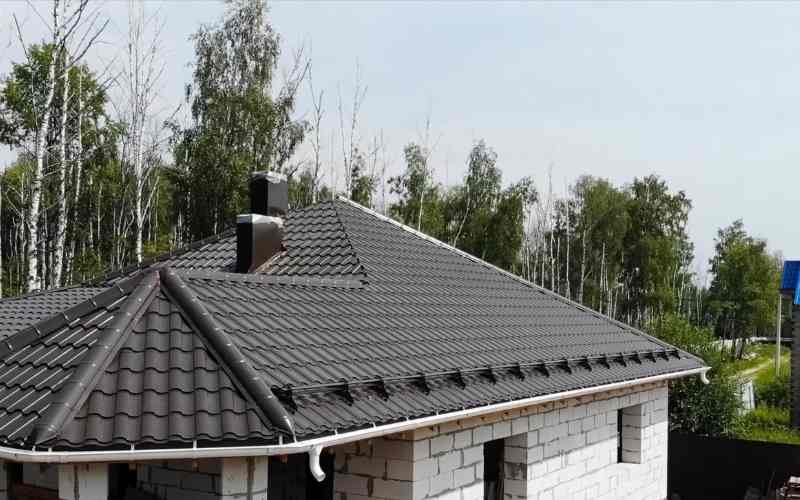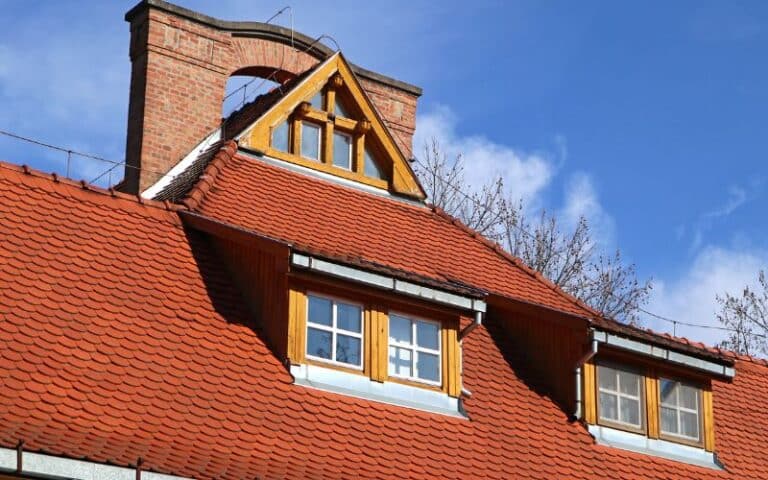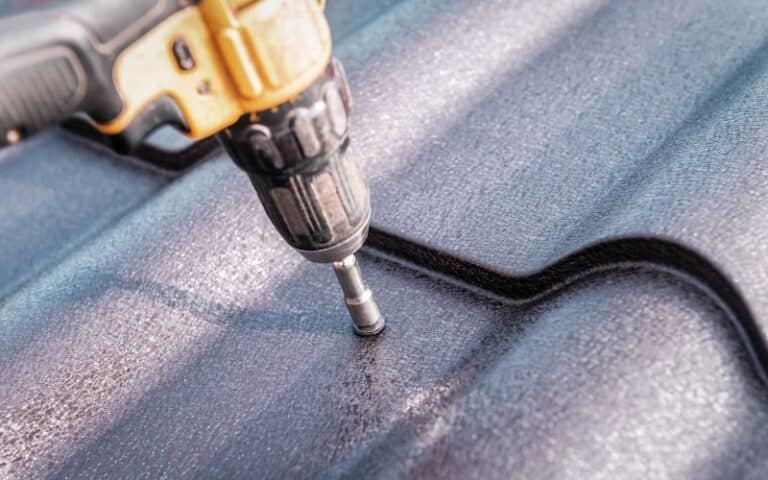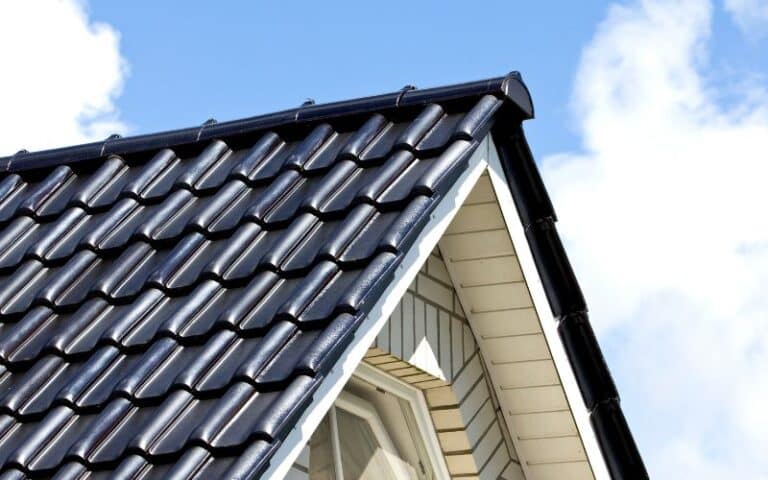If you see signs of sagging in between the trusses of your roof, you are probably wondering what this could mean for the future of your home.
Over the life of your home, certain problems like these tend to pop up and become an issue. It is normal for some of these problems to appear.
But there are some situations where there is a frequency of problems occurring at once or are difficult to handle alone. It might be time to consider hiring a professional to examine your house’s overall structural integrity.
The roof is one very essential component of your house. But first, you want to know what is causing your roof to sag to prevent unforeseen damages that might arise in the future.
So, you may be wondering why your roof sags in-between trusses?
There are many reasons why your roof must be sagging in-between trusses, such as improper installation of the trusses and improper ventilation in your attic, which leads to the accumulation of moisture. It could also arise from too much weight on the roof, damaged roof decking, and weather-related issues like strong winds, rain, and snow.
Ready for a Roofing Quiz?
What Causes Roof To Sag Between Trusses?

Sagging roofs tend to be more serious than other roof problems. If your house shows signs of a sagging roof, it is likely because of a damaged roof decking, leak, excess moisture, or too much weight.
If you are not properly maintaining your roof, it could begin to sag.
The roof sagging in between trusses is an indication that there are problems with the roof system. Some are structural, and some are not.
The most common reasons for this problem are:
#1. Wind
Often, wind damage is the culprit behind your sagging roof. If high winds or even tornadoes have damaged your roof, you may see a sagging in your roof.
The sagging usually occurs between trusses and other areas of your roof. The sagging is because the trusses cannot support the roof’s weight, so they start to sag under pressure.
With time and continued exposure to high winds, this will only get worse until it becomes a serious problem that needs immediate attention from professionals.
#2. Improper Installation
Improper installation can lead to a sagging roof. The sagging happens when the roofer does not install the trusses properly or they are not installed on a level surface.
If the trusses are not installed properly, they will warp and move over time, causing the roof to sag.
Another reason includes using the wrong nails or screws during installation. This problem could have also come about by using nails with too much torque when nailing them into place.
Eventually causes the nails to pull out over time if they are not installed correctly.
#3. Improper Ventilation
Another common reason roofs sag is poor attic ventilation. If you have poor attic ventilation, it can cause problems with your roof structure. These problems arise because it will trap moisture inside of your house.
This moisture t.causes the wood in your attic to expand and contract. This action will cause your roof structure to crack and warp over time, causing it to sag between trusses.
If you notice that your home’s roof is sagging in between trusses, contact a professional as soon as possible.
Then they can inspect the entire structure of your home and determine what needs to be done to fix it.
#4. Leaks
If you have a leaky roof and it persists for a significant time, the water can cause structural damage. If moisture reaches your rafters, trusses, or roof sheathing, these structural components can bend under the weight of your roof.
To fix this problem, you may need to reinforce the structure of your roof. You can add more beams and chains or install new sheathing
#5. Snow
The most common cause of sagging in a roof is the weight of the snow on the roof. The weight of the snow can cause the trusses to sag between joists and rafters.
If you have a slope to your roof and it has snow on it, you will likely have some sagging.
If you live in a region where snow falls, cleaning excess snow off your roof can help prevent sagging and ice dam damage. Do not forget to clean off your roof after a snowfall.
Any extra weight on your roof can cause it to sag, which may damage your roof.
Also, if you live in an area that gets many snowfalls, it would be advisable to consider hiring someone to clean your roof for you.
There are less common reasons for sagging between trusses. However, these can still happen if left unchecked over time.
One thing that can happen is that ceiling joists will become bowed over time. The bowing can push against one another and cause sagging between trusses.
Roof sagging is a common problem, especially in older homes. It can be caused by several different things and can be very dangerous if left unchecked.
If you notice that your roof is sagging between trusses, it is important to act quickly. This action is important so that your home does not sustain more damage.
How Do You Fix a Sagging Roof Truss?
You can fix a sagging roof truss with the nuts and bolts by bolting it to the neighboring trusses. The bolts have to be run through all the trusses to hold them together firmly.
It is important to measure the gap between the trusses before you start drilling holes for inserting these bolts.
You can use a steel channel drill bit for this purpose. Use the same number of bolts for each truss because this helps hold your structure more securely.
These nut and bolt sets are available at hardware stores. If you can not find them there, you could also try online retail sites like Amazon.
After bolting all your trusses together, your last step is filling up any remaining gaps between them with concrete or brick mortar.
This action will help prevent any water from seeping into these spaces and causing further damage to your roof.
How Much Does It Cost To Repair a Sagging Roof?
The cost for a sagging roof repair is dependent on the extent of damage and the amount of repair work needed, but it can be anywhere from $1,000 to upwards of $3,000.
The scope of the problem is important to consider when thinking about how much it will cost you to get your roof back into good shape.
For example, if you are experiencing sagging between trusses, this may be a sign. A sign that there is an issue with the rafters or structural support.
Sometimes you may notice sagging in one area and do not see any other signs of something significantly wrong with your roof’s structure.
If that happens, you may only need minor sagging roof repairs and can expect to pay less.
In some other scenarios, you may notice that the sag is severe or accompanied by other signs that your roof needs significant help. If that happens, then a sagging roof repair will likely cost more money.
If you are starting from the beginning and have yet to build your roof trusses, proceed carefully. A DIY roof is often cheaper than hiring a contractor because there are no labor costs.
But if you are not careful about assembling your roof trusses, they might not be as strong and sturdy as they should be.
Also read: How To Install Blocking Between Trusses?
Conclusion
A roof system is designed to withstand the forces of wind, snow, and rain. Over time, however, a roof can begin to sag or droop.
Usually happens in-between trusses. And the causes have been stated above in this article and preferred solutions.
Get that sagging roof repaired now!






